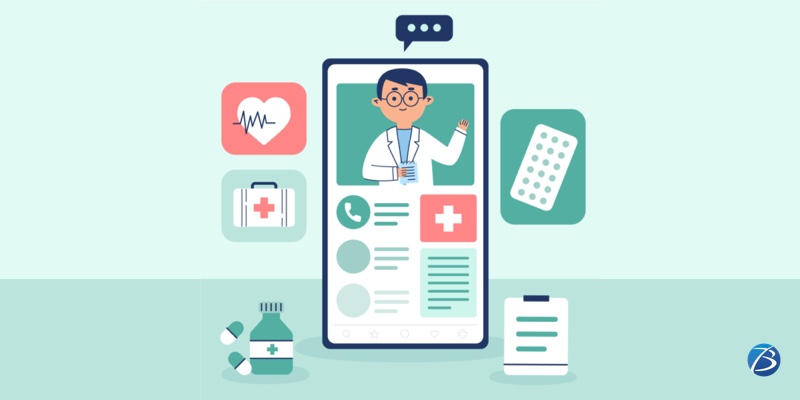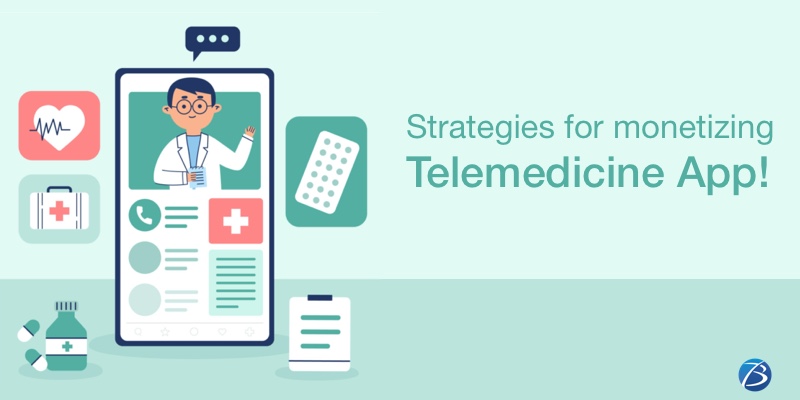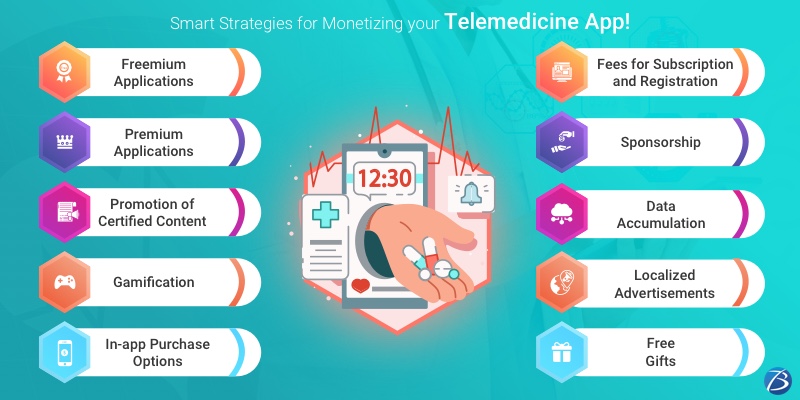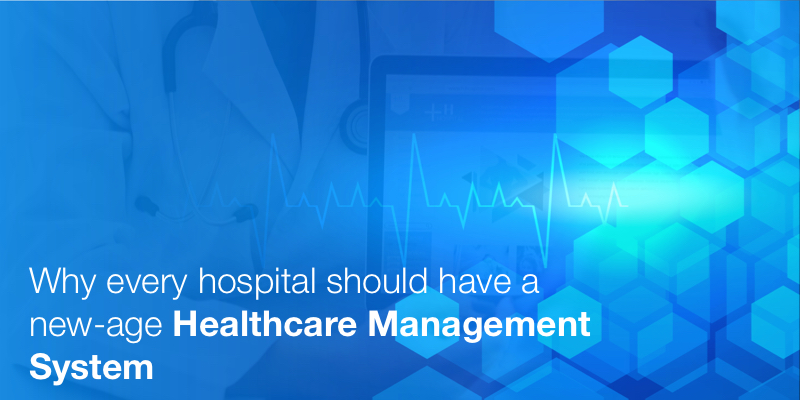Smart Strategies for Monetizing your Telemedicine App!


Telemedicine app development has gained momentum over the last decade owing to several reasons. Young entrepreneurs and even giant companies are looking at this as an opportunity and are developing high-end telemedicine applications for
healthcare organizations.
However, developing an exceptional telehealth app is not enough; you also need to monetize your app. And, one of the trickiest jobs for entrepreneurs or a telemedicine app development company is selecting the right monetizing model or
strategy that would boost their ROI. In this article, we are going to give you insights on trending app monetization models and strategies that will prove beneficial to telemedicine app owners.
Trending Monetizing Strategies for Telemedicine Apps

Freemium Applications
This category comprises a combination of free and premium apps – offering two versions of the same app. The free version usually provides access to the basic features, while the premium or paid version comes with additional offerings
like advanced features.
The key objective behind this model is to encourage users to download the app for free initially and learn about its usability. Once the app succeeds in engaging the users and fulfilling their needs; the free users will most likely get
converted into paid users for accessing enhanced features. This enables the users to get information on what kind of services they are paying for. Moreover, positive feedback by users adds value to your app.
Premium Applications
This model involves charging users for downloading apps and is an ideal option for niche apps with a narrow target audience. Just create a merchant account in the Google Play Store or the App Store and then set the price for downloads.
However, this kind of model may limit the monetization potential of your app.
Promotion of Certified Content
This monetization strategy is applicable for apps that provide peer-to-peer services, and that sell certified content that is vital for the practice of care providers instead of selling features. Take a look at this example. In
telehealth apps, a fixed amount of free content is displayed for doctors. But, for gaining access to comprehensive content that is periodically updated, practitioners need to sign up and pay a recurring amount as a subscription.
Gamification
Introducing gaming into a telemedicine app enhances the app’s user-friendliness. This is so because the games are designed playfully as per the app’s basic idea and the users participating in these games have to achieve some levels
based on the story created by the telemedicine app developers. The offerings through gaming include reminders about daily exercises, medicines, and doctor visits, and even provide fitness status after weeks of medication intake or
exercising. Besides these, several innovative strategies like discounts, free prizes, or advice by practitioners can be also included. Thus, integrating gamification in a telemedicine app development solution enables users to set goals
concerning fitness or healthcare as well as track their progress, thereby enhancing user engagement.
In-app Purchase Options
This is one of the commonest monetizing strategies for free applications. In telehealth apps, in-app purchases include refilling prescriptions, buying supplements, arranging for pre-pay doctor visits, etc. As such, this approach not
only proves profitable for app owners but also benefits users. But remember that your app should function even if the users do not opt for additional purchases.
Fees for Subscription and Registration
Free healthcare applications that serve as effective platforms connecting patients to physicians can charge a registration fee from practitioners who use the app for filling in their free time slots. Moreover, you can establish a
subscription monetization model which enables users to select the subscription plan based on their requirements and pay a fixed monthly/yearly/quarterly charge for app usage.
Sponsorship
This strategy refers to integrating sponsorship in your application. It includes embedding the sponsors’ logo within the application in the form of a pop-up or an icon on the splash screen or the footer. It may even include providing
special offers or promoting the sponsors’ posts. Telemedicine app owners can rope in influential sponsors from the healthcare domain itself and establish a kind of barter system where they offer products, services, discounts, etc. based
on the business domain. This approach proves highly profitable in the medical sector as it not only arouses users’ interest in the healthcare app but also enables app owners to accumulate crucial and valuable data.
Data Accumulation
Big data and AI are trending these days. Big data in the healthcare domain refers to all data concerning the patients’ health and is a valuable asset for several pharmaceutical firms, medical enterprises, fitness training centers,
insurance agencies, etc. for effectively running their businesses. And, the healthcare app owners profit by selling this data to the interested parties. For
instance, an app tracking the lifestyle of patients who were obese earlier and had gastric bypass surgery can sell the accumulated data to pharmaceutical/insurance companies, or fitness experts. Furthermore, this data serves as
important statistics for usage in medical journals, reports, and magazines, and for assessing the advancement of the medical industry.
Localized Advertisements
The advertisements in telemedicine apps must be relevant to user interests, or else the UX may get hampered badly. Certain mobile advertising partners employ beacons, GPS, and Wi-Fi to localize advertising to allow mobile ads that
target customers in real-time. These ads allow the apps to connect to the users on the spot. For example, users within close vicinity of a pharmacy store with a beacon may get a notification on their smartphone device informing them
about the availability of a medication coupon or any other such healthcare-related stuff. However, users should be provided the flexibility to choose the brands from
which they wish to receive notifications. This will not only increase the users’ interaction with ads but also enhance the value of the ad spaces, thereby attracting more brand partners.
Free Gifts
The words “Free services/products” are never missed by any user whereas complex or costly stuff is likely to be overlooked by most. So, free services are a smart way to attract new customers and motivate existing customers to use the
app more often. They include:
- Providing free weight/calorie calculators to daily users
- Free consultation, advice, and tips for minimizing the risk of getting infected by various diseases
- Offering a free medicine kit comprising personalized medicines for a week to daily users who strictly adhere to their fitness/healthcare regime.
Conclusion:
It is important for healthcare app owners to pick a suitable monetizing strategy. It is advisable to choose a combination of monetization models for maximizing adoption and optimizing profitability. But, if you are not technical enough
or require a customized telemedicine solution, seeking assistance from an experienced Telemedicine app development company will prove beneficial.

